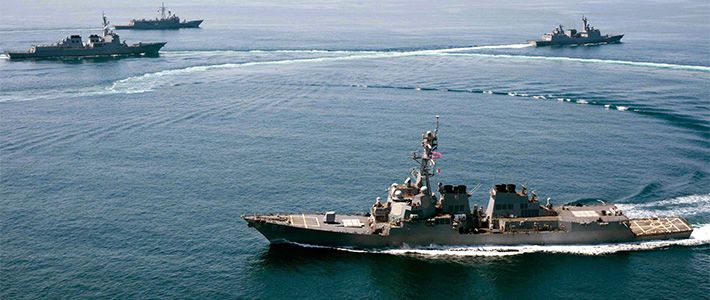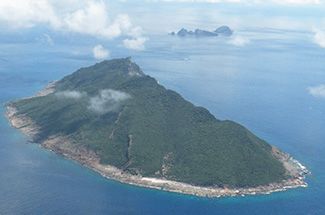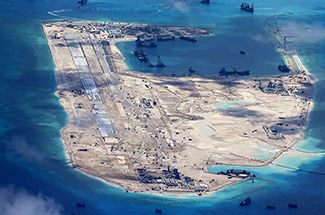
Maintaining Peace in the South China Sea
Politics- English
- 日本語
- 简体字
- 繁體字
- Français
- Español
- العربية
- Русский
The American Response in the South China Sea
After more than six months of debate within the Barack Obama administration about how to respond to China’s artificial island building, on October 27 the United States conducted a freedom of navigation operation (FONOP) within 12 nautical miles of Chinese-occupied Subi Reef, which has been terraformed through dredging. The operation was part of a continuum of FONOPs that the United States has conducted globally for decades. In fact, this was the seventh American FONOP in the South China Sea since 2011. Had it been conducted quietly, without leaks to the press, it would have been a normal and routine operation.
Although some experts charged that the United States botched the operation by conducting an “innocent passage” that implicitly granted China a territorial sea around Subi Reef, which in its natural state is a low-tide elevation, this represents a misunderstanding of UNCLOS, the United Nations Convention on the Law of the Sea. Since Subi Reef is located within 12 nautical miles of a rock also claimed by China—unoccupied Sandy Cay, which is entitled to a territorial sea under article 13 of UNCLOS—Subi can be used as a baseline from which to measure the territorial sea of the other feature. US government international lawyers therefore concluded that high sea freedoms may not apply around Subi Reef and advised the US Navy to conduct an innocent passage, which entails sailing directly through the waters inside 12 nautical miles without loitering or conducting military activity.
In choosing Subi Reef for the first FONOP conducted within 12 nautical miles of one of China’s artificial islands in the Spratlys, the United States opted to be cautious. Had Mischief Reef, which does not lie within 12 nautical miles of another land feature, been selected, a US naval vessel would have been required to conduct a non-innocent freedom of navigation operation that included performing a military activity, such as deploying helicopters or collecting intelligence by sailing with fire control radars on. Such actions were deemed as somewhat more provocative and thus judged to be a better choice for future FONOPs. In the aftermath of the Subi Reef operation, a US Navy source has hinted that the next FONOP will be conducted around Mischief Reef.
Sailing in Uncertain Seas
The legal status of many of the land features in the Spratlys is ambiguous, or at least undetermined. It is possible that the UNCLOS Arbital Tribunal will bring some clarity to this matter next year when it issues a ruling on the case brought against China by the Philippines. In the meantime, US FONOPs are asserting the right of ships to transit close to China’s artificial islands. With these operations the United States is demonstrating that China’s attempts to restrict navigational rights and freedoms around reclaimed features are unlawful, and that America will continue to uphold the rights of nations to sail, fly, and operate anywhere permitted under international law. Although China’s maritime claims remain vague, the Chinese military has warned US aircraft to leave the area, saying they were entering a “military alert zone” even when they were flying more than 12 nautical miles from Chinese-occupied features. There is no such concept as a “military alert zone” in international law.
▼Further reading Get Ready: China-Japan Tensions Set to Flare over East China Sea Security specialist Jeffrey Hornung on the chance that South China Sea tensions may spill into the East China Sea, where Japan and China see growing friction. Get Ready: China-Japan Tensions Set to Flare over East China Sea Security specialist Jeffrey Hornung on the chance that South China Sea tensions may spill into the East China Sea, where Japan and China see growing friction. |
The US destroyer that conducted the operation around Subi Reef, the USS Lassen, also sailed close to features in the Spratlys occupied by Vietnam and the Philippines that have also undergone land reclamation, albeit on a much smaller scale. This was intended to send the signal that the purpose of the FONOP wasn’t to single out China.
In addition to demonstrating US willingness to challenge Chinese attempts to restrict access or limit lawful navigation and overflight in the South China Sea, the Obama administration’s decision to begin conducting FONOPs close to China’s artificial islands is part of a strategy aimed at altering China’s behavior and reassuring regional states that America will continue to be a key provider of security in the Asia-Pacific. By accepting more risk, Washington hopes to successfully counter the Chinese campaign of coercion and ensure that a stable, rules-based order prevails. Before the United States began to sail close to China’s islands in the Spratlys, it was avoiding risky behavior and emphasizing crisis management with China, which left the impression that Washington feared escalation and was unwilling to confront China. It is possible, however, for the American side to incur risk in the South China Sea, by conducting frequent FONOPS and undertaking other actions, while also pursuing confidence-building measures with China to avoid accidents and reduce misunderstanding about each other’s intentions.
Needed: A Multipronged Strategy
FONOPs alone will not likely alter the Chinese approach to the region. Other measures are being taken to change China’s calculus and encourage it to rely on diplomacy rather than pressure to manage territorial disputes with its neighbors. The United States flew two B-52 strategic bombers near the Chinese-built islands in mid-November. At approximately the same time, the US Navy and the Japanese Maritime Self Defense Force held the first-ever bilateral exercise in the South China Sea. Assuming that the Philippines’ Supreme Court rules that the Enhanced Defense Cooperation Agreement is constitutional, the US military will have access to eight or more Filipino bases for rotational deployments. Two of these bases are apparently located close to disputed islands in the Spratlys. Without such access, bases in Okinawa remain the closest US military deployments to the South China Sea.
Diplomacy is also a critical element of US strategy. President Obama raised concerns about Chinese activity in the South China Sea at the East Asia Summit in Kuala Lumpur, along with leaders of other like-minded nations. Prior to arriving in Malaysia, Obama visited the Philippines, where he toured the flagship of the Philippine navy, the BRP Gregorio del Pilar, which used to be a US Coast Guard vessel. He described the ship as a symbol of US-Philippine maritime cooperation, while underscoring the shared commitment of both allies to “the security of the waters of this region and to the freedom of navigation.”
China reacted with restraint to the American FONOP around Subi Reef. Chinese naval ships shadowed the USS Lassen, but did not interfere with the operation. China’s foreign ministry spokesman called the action “a threat to China’s sovereignty and security” and pledged to “take all necessary measures as needed” in response. However, Beijing seeks to avoid a military confrontation with the United States, and it is likely to tolerate future US FONOPs, which are going to be the “new normal” in the South China Sea going forward. According to one report, the United States plans to conduct such operations about twice a quarter.
Cooperative Contributions Will Be Key
▼Further reading Confronting China’s Island-Building Campaign MSDF Vice Admiral (ret.) Kōda Yōji examines how Japan should respond to Chinese moves in the South China Sea. Confronting China’s Island-Building Campaign MSDF Vice Admiral (ret.) Kōda Yōji examines how Japan should respond to Chinese moves in the South China Sea. |
The effectiveness of the US attempt to persuade China to change its behavior will be greatly enhanced if other countries are willing to contribute more to strengthen deterrence. Japan, Australia, and India could conduct their own freedom of navigation operations within 12 nautical miles of China’s artificial islands as well. Doing so would aid in demonstrating to Beijing that its policies are of concern to other nonclaimant nations, not just the United States. At the same time, diplomats from those and other countries with an interest in preserving peace and stability, as well as in freedom of navigation in the South China Sea, should press the Chinese to abide by President Xi Jinping’s statement during his September visit to the United States that China does not intend to militarize the Spratlys.
The strategy to convince China’s leadership that the costs of continuing its destabilizing behavior are prohibitively high and that diplomatic cooperation is a more attractive option can succeed over time, not overnight. Patience, consistency, and clear signaling are necessary. The United States, its allies, and its partners must use their economic, military, and diplomatic instruments of power to convince China that changing course serves its interests in maintaining good relations with its neighbors and achieving a peaceful rise.
(Originally written in English on November 30, 2015. Banner photo: the USS Lassen, here pictured in a May 2015 training exercise, carried out a FONOP past China-occupied Subi Reef in October. Courtesy US Navy.)United States China South China Sea Territory Spratly Islands navigation MSDF US Navy